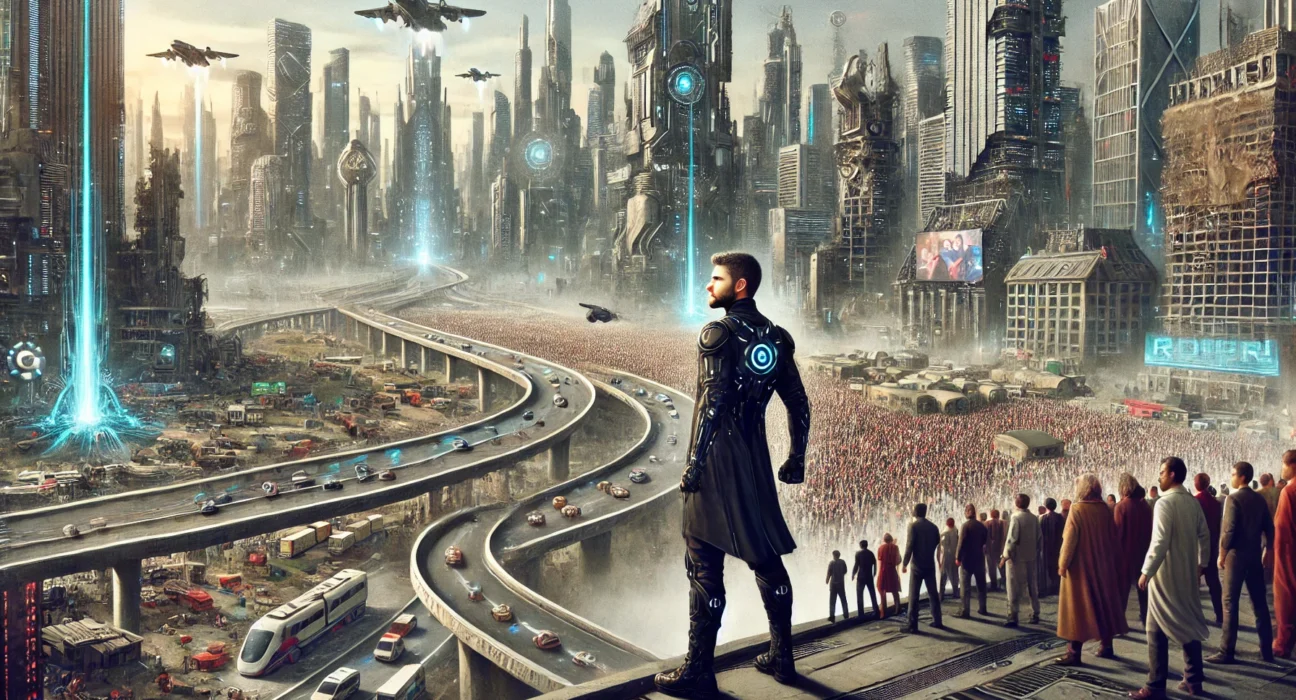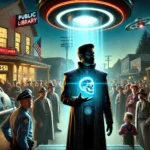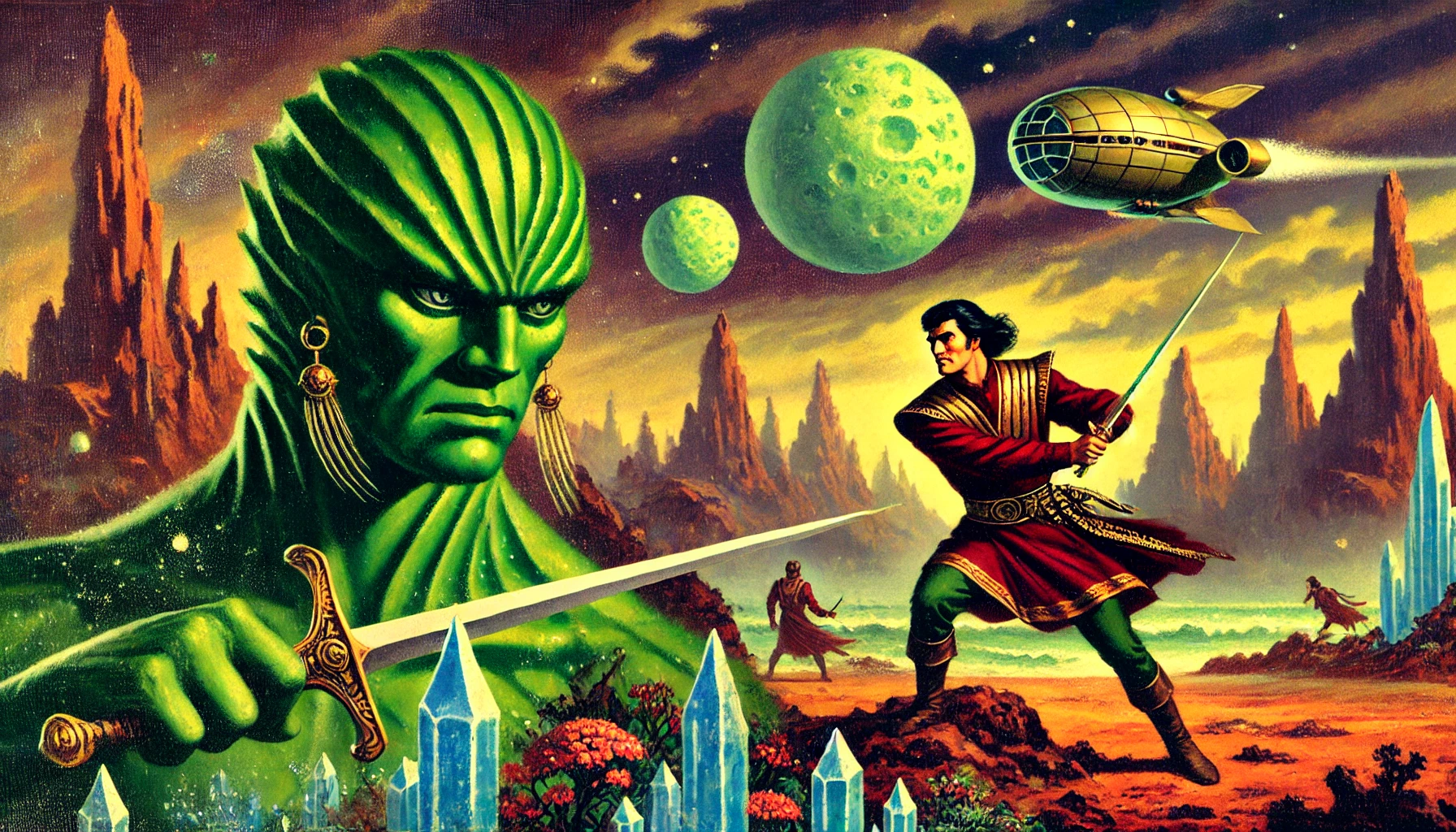The Sleeper Awakes is a dystopian science fiction novel written by H.G. Wells, first published in 1910. The story follows the journey of Graham, a man who falls into a deep sleep for over two hundred years and awakens in a radically transformed world where he becomes the unexpected key to power in a society dominated by a massive economic monopoly. The novel explores themes of social control, technology, and the corrupting nature of power in a future dystopian world.
Plot Summary
In the twilight of the 19th century, Graham, a man haunted by endless insomnia, roamed the cliffs of Pentargen, battling a sleepless torment that had lasted for days. His mind, overburdened by the weight of modern life, had pushed him to the brink of madness. Desperate for rest, he found no solace in any remedy. The world had become oppressive, its daily demands a heavy burden on his fatigued body and spirit. The sleepless man longed for the escape of oblivion, the final rest that only sleep—or death—might bring.
One day, in a fit of despair, Graham collapsed into a trance, falling into a sleep so deep it defied understanding. For over two centuries, his body lay motionless, preserved in a glass case as the world transformed beyond recognition. During his prolonged slumber, the wealth he had unknowingly amassed grew, and with it, the power of those who controlled his fortune. The world of his waking would be one dominated by towering cities, technological wonders, and a rigid class divide that placed the masses in servitude to the elite.
When Graham finally awoke, he was no longer in the world he had known. The year was far removed from his time, and the world had become a labyrinth of machines, endless moving walkways, and massive cities that stretched far into the sky. Confused and disoriented, he found himself in a strange chamber, attended by men who spoke in a peculiar manner. They informed him that he had been asleep for over two hundred years, and during this time, his wealth had grown beyond measure. Graham, once a mere man struggling with insomnia, had become the richest individual in the world, his fortune held in trust by a global government that ruled in his name.
But all was not well in this future society. The common people, toiling endlessly under the control of a shadowy oligarchy, were on the brink of revolution. The vast wealth and power that had accumulated around Graham’s name had become a tool of oppression, used to maintain control over the masses. The “Sleeper,” as Graham had come to be known, was a symbol of authority, a figure revered and feared, though he had no knowledge of the role he played in the world’s governance.
Among the leaders of this oppressive regime was Ostrog, a cunning and ambitious man who posed as a revolutionary. He sought to gain Graham’s trust, presenting himself as a liberator of the people. He convinced Graham that the ruling class, the so-called “White Council,” had corrupted the world, using Graham’s wealth and name to suppress the population. Trusting Ostrog, Graham agreed to be the figurehead of a revolution that would topple the Council and return power to the people.
As the revolution unfolded, the masses rose up against their oppressors, overthrowing the Council with Graham’s endorsement. Yet, once the Council was defeated, Ostrog revealed his true intentions. He had no desire to liberate the people; instead, he sought to become the new autocrat, replacing the old masters with himself at the helm. Graham, horrified by the betrayal, realized that he had been a pawn in Ostrog’s game. His awakening had set in motion a chain of events that only deepened the misery of the people.
In the midst of this new regime, Graham’s conscience stirred. He began to see the suffering around him more clearly—the great divide between the opulent elite, who lived in luxury high above the city, and the impoverished masses, forced to toil in squalor. The world had become a mechanical beast, with machines controlling every aspect of life, and the people trapped in a relentless cycle of labor. Revolts broke out across the lower levels of the city, driven by the despair of the workers who sought freedom from their mechanical chains.
As Graham wrestled with his role in this dystopian world, he met Helen Wotton, a passionate woman of the underclass who was part of a clandestine movement against Ostrog’s rule. She revealed to him the full extent of the oppression faced by the working class and inspired him to take action. Together, they planned to overthrow Ostrog and restore a semblance of justice to society.
Determined to undo the damage caused by his name and fortune, Graham took it upon himself to lead the rebellion. But he was no longer the passive Sleeper; he was now a man awakened to the realities of power, control, and the desperate need for change. With Helen’s help, he united the scattered resistance forces, rallying them against Ostrog’s dictatorship.
The final confrontation took place in the heart of the city, where the great machines of production whirred endlessly, churning out wealth for the elite while the workers toiled in misery. Graham, armed not with weapons but with the weight of his authority and the will of the people, faced off against Ostrog. The struggle was fierce, as Ostrog’s forces sought to maintain control over the immense machines that powered the world. But the tide of revolution had turned, and the masses, inspired by Graham’s leadership, rose in revolt.
In a climactic battle, Ostrog’s reign was brought to an end, his forces scattered by the sheer force of the people’s will. The machines, which had symbolized the relentless oppression of the workers, were silenced. The world stood at a crossroads, its future uncertain but no longer in the grip of tyrants.
Graham, though victorious, was left with the realization that the task ahead was monumental. The world had changed so drastically from the one he had known, and the struggle for justice and equality was far from over. Yet, for the first time since his awakening, Graham felt a sense of purpose. He had awoken not just from sleep, but from the ignorance that had kept him blind to the suffering of others. The future, though fraught with challenges, was now in the hands of those who had long been oppressed.
Main Characters
Graham (The Sleeper): Graham, the protagonist, is a man who suffers from insomnia and falls into a cataleptic trance for two centuries. When he wakes, he discovers that his wealth has made him a ruler of the world, despite being unaware of how power was consolidated in his name. Confused and struggling to understand this new world, he is thrust into the center of a political revolution. His arc explores themes of isolation, responsibility, and the desire for justice in an unfamiliar and oppressive future.
Ostrog: Ostrog is a key antagonist, a powerful figure who leads the revolt against the oppressive government but harbors his own ambitions for control. Initially appearing as an ally to Graham, he ultimately reveals his dictatorial tendencies, making Graham question his trust in those who seem to be revolutionaries.
Isbister: Isbister is the man who initially helps Graham when he is suffering from insomnia before his long sleep. Although he appears briefly, his compassion and concern for Graham set the stage for the protagonist’s journey into sleep and his later awakening in a vastly different world.
Helen Wotton: Helen is a woman of the future who becomes Graham’s confidante and love interest. She is deeply involved in the revolutionary activities and provides a moral compass for Graham, advocating for the oppressed classes in the dystopian society. Her character highlights the novel’s themes of rebellion and social justice.
Theme
Power and Corruption: One of the central themes of The Sleeper Awakes is the corrupting nature of power. Graham’s unexpected rise to being the de facto ruler of the world exposes the dangerous effects of unchecked authority and economic control. The novel critiques the concentration of power in the hands of a few elites and explores how that power distorts human relationships and moral values.
Technology and Control: The future world that Graham awakens to is one where advanced technology is used to maintain social control. From surveillance mechanisms to transportation systems that keep the masses contained, technology serves as both a tool for progress and a means of oppression. Wells explores the duality of technology as a force that can either liberate or enslave.
Class Struggle: Class conflict is a pervasive theme in the novel, with the working masses exploited by the wealthy elite who live in luxury. The stark contrast between the privileged and the oppressed fuels the revolutionary fervor that engulfs the world after Graham awakens. This theme resonates with Wells’ socialist views, as the novel presents a critique of capitalism and economic inequality.
Isolation and Alienation: Graham’s personal journey is one of profound isolation. After sleeping for over two centuries, he is disconnected from the world he once knew. He experiences alienation not only due to the passage of time but also because of his symbolic status as the “Sleeper,” a figure manipulated by both the ruling class and the revolutionaries.
Writing Style and Tone
H.G. Wells’ writing style in The Sleeper Awakes is characterized by its detailed world-building and sharp social commentary. His prose is direct, yet he takes care to intricately describe the futuristic society that Graham encounters. Wells uses vivid imagery to convey the technological advancements and the oppressive atmosphere of the new world, immersing the reader in a bleak dystopia. His narrative technique often juxtaposes the protagonist’s inner turmoil with the external chaos of the revolution, enhancing the sense of disorientation that Graham feels.
The tone of the novel is largely one of caution and critique. While there is a sense of wonder at the technological advancements of the future, Wells adopts a critical perspective on how such progress can lead to dehumanization and exploitation. The novel’s tone shifts between suspense, as Graham navigates the dangers of this new world, and reflection, as it delves into deeper philosophical questions about power, freedom, and the human condition.
We hope this summary has sparked your interest and would appreciate you following Celsius 233 on social media:
There’s a treasure trove of other fascinating book summaries waiting for you. Check out our collection of stories that inspire, thrill, and provoke thought, just like this one by checking out the Book Shelf or the Library
Remember, while our summaries capture the essence, they can never replace the full experience of reading the book. If this summary intrigued you, consider diving into the complete story – buy the book and immerse yourself in the author’s original work.
If you want to request a book summary, click here.
When Saurabh is not working/watching football/reading books/traveling, you can reach him via Twitter/X, LinkedIn, or Threads
Restart reading!








